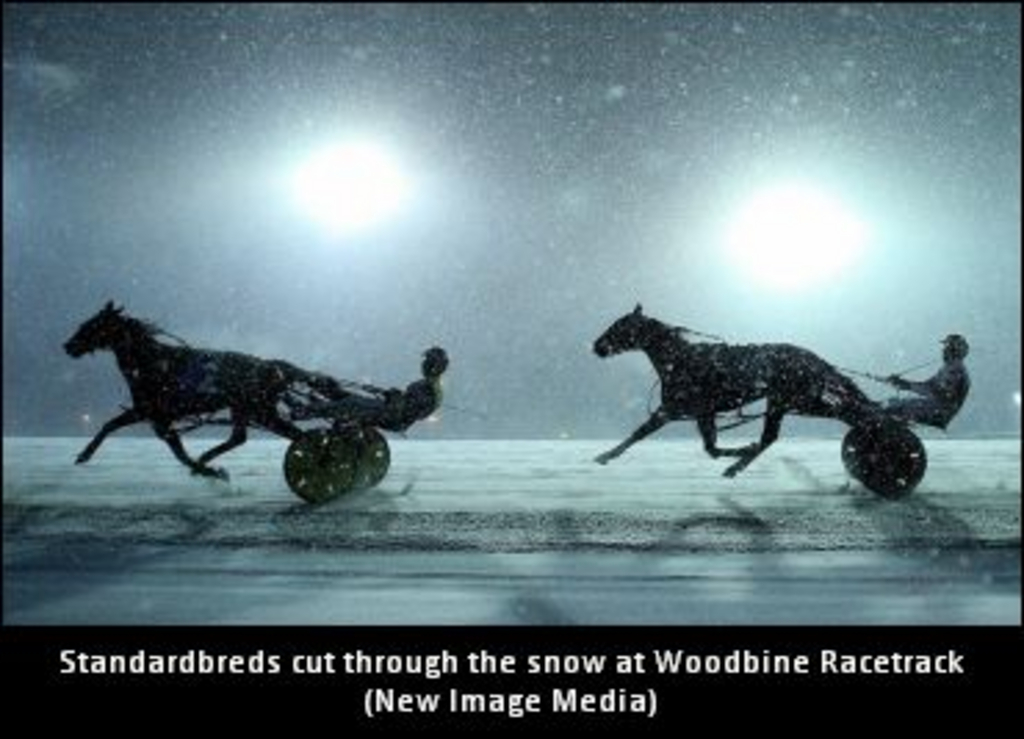Drivers Discuss Winter Warmth

“Well, it’s a definitely a good day to talk about it, isn’t?” quipped Ryan Holliday, as he stepped back inside his house. When it comes to winter horse racing, the challenges are many. But not all of them come on the racetrack.
With the mercury hovering around minus-16 Celsius in Mount Forest, Ontario, the 31-year-old driver, who has averaged 118 wins over the past three seasons, was content to spend the rest of the evening indoors.
Understandable, considering Holliday spends a fair bit of time in the sulky at The Raceway at Western Fair District and other southwestern Ontario racetracks over the winter months.
“I guess the first thing that comes to mind – I probably have the same approach as everyone else who does this – is that layering up is a big key,” he started. “There are so many good clothing options to wear underneath, Under Armour, for example. It’s pretty good at keeping you warm. For me, the toughest part of being out there is keeping my feet warm. But most of the drivers grew up in this type of climate and are accustomed to it.”
Australian-born driver Natasha Day, also a Western Fair regular, constantly reminds herself of advice she often heard as a kid.
“If you wear enough good layers, you shouldn’t get cold,” said Day, who won a career-best 47 races in 2017. “It’s another thing my mom taught me.”
For Tyler Borth, who sits 25 wins shy of 500 lifetime victories, the first drive of the evening sets the tone for the rest of the race card.
“Getting the first race out of the way is important because your hands are usually freezing,” said the 25-year-old reinsman. “And then they are good for the rest of the card.”
-Ontario-Racing-(1)-001.jpg)
There are those rare nights, however, when the weather offers up an unrelenting combination of unforgiving conditions: brutal cold, wind and a mix of rain and snow.
“It’s the worst when it’s wet in the winter,” offered Holliday, who has driven 884 career winners since 2008. “When it rains, that’s really tough. We have suits for it, but it’s hard on the face, hard on the eyes and hard on the hands. It can really hit you in the face. It’s just dirty and cold.”
Quite often, there’s little time to get a break from the elements.
If Holliday has back-to-back drives, he could have five minutes or less to try and warm up before he gets back in the race bike.
“I just keep walking around, trying to keep the circulation going,” he said, adding with a laugh, “It’s the horses that do the work. I just have to hang on.”
Easier said than done?
“Your hands can get cold, but I think once you’re out there, the adrenaline kicks in and you don’t feel it,” said Holliday. “Your focus is on winning the race. The plan of attack, regardless of the weather, is always the same – you want to get to the finish line first.”
Holliday crafts a different approach in colder temperatures when it comes to readying his ‘teammate’ before the starter calls.
“As a rule, especially on cold nights, I like to keep the horses moving so they can stay warmed up,” he noted. “In the summer, I might let them walk a bit. You can tell when your horse is cold, so you make sure they’re okay. ”
A sentiment echoed by Borth, who also trains.
“For training my own stable, keeping the track on our farm in good shape is important,” he said. “You want to keep the horses tight and in shape with the bad weather.”
In Holliday’s view, the biggest hurdle of winter racing is in the journey itself.
“I have about an hour and 45-minute drive to get to London,” he noted. “It can be pretty dicey in the winter. I think that’s the toughest part of winter racing, commuting safely back and forth to the racetrack. I give myself plenty of time to get there. You bundle up and head out.”
And you think warm thoughts, then and later on.
“That doesn’t hurt,” said Holliday. “It’s pretty warm in the drivers’ room. There’s enough hot air going around there to keep you warm for a long time.”
Just long enough to see him through until his next drive.

